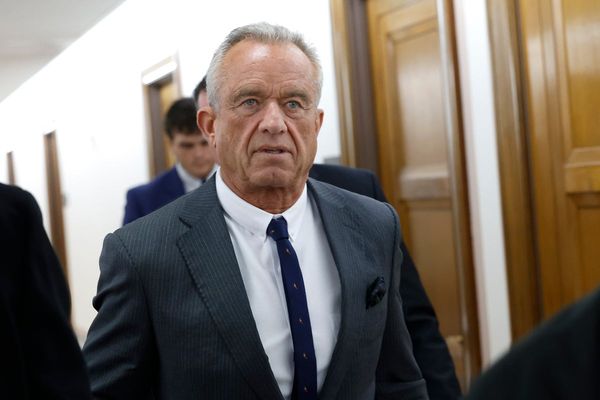
Tesla's record first-quarter vehicle sales belie growing concerns that CEO Elon Musk's inventory of unsold vehicles is reaching unhealthy dimensions despite the generous use of rebates to move metal.
Shares, which rallied more than 6% on Friday ahead of this weekend’s results, are indicated to open lower as investors are expected to take profit on their recent bullish bets.
Despite juicing sluggish demand with price cuts the world over, Musk eked out an increase of only 4.3% in deliveries over the final three months of December. The fear is the desire to claim yet another record will come at the cost of its prized margins.
In a worrying sign, excess supply as reported by Tesla hit 13 days’ worth of sales at last quarter’s pace, a two-thirds increase over the year's end and its highest since the third quarter of 2020 drew to a close.
Independent analysts calculate the level to be north of that official figure.
In the trailing twelve months, Tesla has built more than 78,000 cars than it has delivered to customers.
Musk's company has repeatedly claimed the gap is due to an increase in cars “in transit” as they transition away from prioritizing cars due for export early in the quarter before focusing on domestic demand.
Tesla blamed Q1's weak Model S and X volumes on this very issue, but the assurances fell on skeptical ears.
“Delivery numbers for X/S are a bit troubling,” wrote Ross Gerber, longtime Tesla bull and CEO of fund manager Gerber Kawasaki. “Even with price cuts they seem to have lost the high end customers this quarter.”
The disappointment over its tepid Q1 sales gain led to a furious struggle over control of the narrative on social media.
Musk’s own Twitter warriors used his Community Notes feature to prod Reuters into correcting a headline that Q1 deliveries actually fell short of expectations (the news agency uses its own proprietary polling data from data partner Refinitiv that differed from those compiled by Bloomberg).
Tesla is judged differently
As a growth stock that aspires to an average annual volume growth of 50%, a truly staggering figure in the manufacturing industry, it’s important to remember the market judges Tesla’s development differently from that of other incumbent carmakers.
Instead of the typical focus on year-over-year volume gains—where Musk always impresses thanks to the growing adoption of EVs—investors importantly cast their judgment based on Tesla’s improvement from one quarter to the next.
And here the 4.3% increase over Q4 is lackluster at best when viewed in conjunction with growing inventories and price cuts.
Bulls argue the first quarter is traditionally weak because of the Chinese lunar new year while sales were hampered because price cuts only began bolstering volumes starting in mid-January.
Yet when your stock is the eighth most valuable megacap in the world and is worth $650 billion, more than the next seven largest automakers combined, there is precious little leeway for disappointment.
Tesla enters Q2-23 with 88k inventory vehicles or 16 days of sales.
— James Cat (@TSLAFanMtl) April 3, 2023
Higher than recent quarters but still reasonable vs historical supply levels and still significantly below the industry, which is 2-3x this number depending on the manufacturer. pic.twitter.com/cQnIg8qxq4
“Delivery growth will have to quicken [to] hit Musk’s annual target,” wrote Gene Munster, a managing partner with Deepwater Asset Management and Tesla bull.
Speculation over Cybervault highlights yearning for new product
Tesla is reaching a size where it struggles to maintain its lofty growth ambitions with its present product range at their current list prices.
Its two new car plants in Germany and Texas recently hit fresh weekly production records and are increasingly absorbing local demand its massive factory in Shanghai once served.
Effectively they are now competing with Tesla's highly profitable Chinese operations for customers.
It’s no coincidence then that Tesla’s automotive gross margins—a closely followed metric of earnings power—peaked at 32.9% in the first quarter of 2022, just before the two new sites began pumping out cars.
The problem for Musk is that his carmaker is valued as a growth stock thanks to its prediction that annual sales will increase to 20 million vehicles a year by 2030.
The math to reach that figure, however, beggars belief: the roughly 1.8 million cars targeted this year would have to soar to 5 million by 2026 before quadrupling just four years later to deliver on his vision.
No carmaker has come anywhere remotely close to that, let alone using just one brand to do so and selling perhaps just 10 different models—half of which already have been launched with the Model S, X, 3 and Y as well as the recently launched Semi.
Semi production itself is too negligible for Tesla to even bother publishing, with commercial vehicles delivered to customers likely numbering in the dozens rather than hundreds. Meanwhile the Cybertruck’s precise launch date this year remains just as unknown as its precise technical specs or prices.
Following last month's disappointing investor day and a coup by rival Volkswagen to steal Tesla's thunder, the yearning for fresh new products to propel its growth narrative was evident in the wild speculation over the "Cybervault" teased last week. Unveiled in China on Monday, it turned out to be just a new wall box for charging your Tesla.
Charge your Tesla, Energize your life🌟Cybervault is available now⚡️ pic.twitter.com/nG5iQ2kJjI
— Tesla Asia (@Tesla_Asia) April 3, 2023







